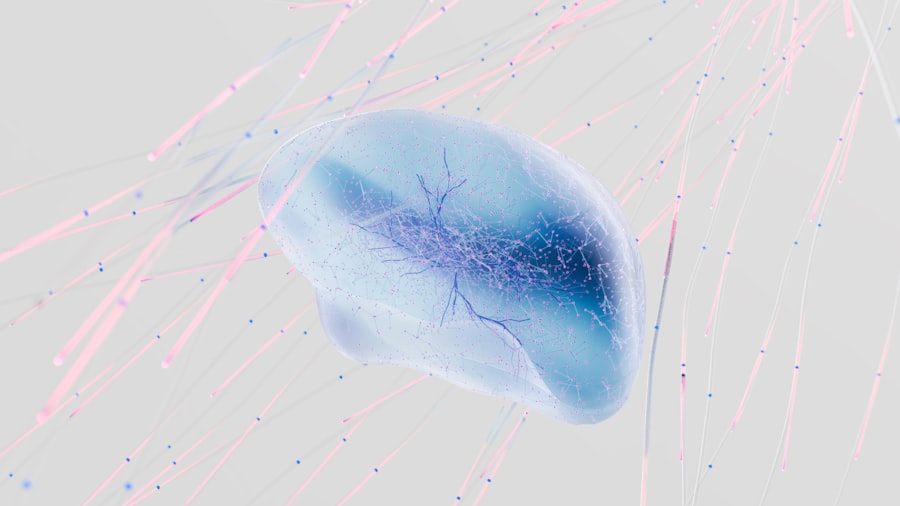As you embark on a journey through the intricate landscape of the human mind, you may find yourself captivated by the concept of reality itself. What does it mean to perceive reality, and how does your brain construct the world around you? The neuroscience of reality delves into these profound questions, exploring the mechanisms that shape your understanding of existence.
By examining how your brain interprets stimuli and integrates experiences, you can gain insight into the very nature of your reality. In this exploration, you will discover that reality is not solely dictated by external factors but is also significantly influenced by your internal processes.
Your perceptions, memories, emotions, and beliefs all contribute to the unique tapestry of your reality. Neuroscience provides a framework for understanding how these elements interact within your brain, shaping your experiences and influencing your interactions with the world. As you delve deeper into this fascinating subject, you will uncover the complexities of how your mind constructs reality and the implications this has for your daily life.
Key Takeaways
- Perception plays a crucial role in shaping our reality, as our brain processes and interprets sensory information to create our perception of the world.
- Memory significantly influences our construction of reality, as our past experiences and stored information shape our current perceptions and beliefs.
- The brain plays a central role in creating our reality, as it processes and integrates sensory information, memories, and emotions to construct our perception of the world.
- Emotions have a profound impact on our perceived reality, as they can color our experiences and influence how we interpret and respond to the world around us.
- Attention plays a key role in shaping our reality, as it determines which sensory information and stimuli we focus on and process, influencing our perception of the world.
The Role of Perception in Shaping Reality
Perception serves as the gateway through which you experience the world. It is through your senses—sight, sound, touch, taste, and smell—that you gather information about your surroundings. However, perception is not a passive process; it is an active construction that involves interpretation and meaning-making.
Your brain constantly filters and organizes sensory input, allowing you to make sense of the chaos around you. This means that what you perceive is not always an accurate reflection of reality but rather a subjective interpretation influenced by various factors. Consider how two individuals can witness the same event yet describe it in entirely different ways.
This discrepancy highlights the role of perception in shaping reality. Your past experiences, cultural background, and even your current emotional state can color how you interpret sensory information. For instance, if you are feeling anxious, a neutral facial expression may be perceived as hostile.
This illustrates that perception is not merely about receiving information; it is about how your brain processes and interprets that information based on your unique context.
The Influence of Memory on Constructing Reality

Memory plays a crucial role in how you construct your reality. Your recollections of past experiences inform your understanding of the present and shape your expectations for the future. When you recall an event, you are not merely retrieving a static record; instead, you are reconstructing that memory in real-time.
This process can be influenced by various factors, including emotions, context, and even suggestions from others. As a result, your memories may not always be reliable representations of what actually occurred. The malleability of memory underscores its significance in shaping your reality.
For example, if you have a positive memory associated with a particular place, you may perceive that location as more inviting and enjoyable than someone who has had negative experiences there. This subjective lens through which you view the world can lead to vastly different interpretations of the same situation. Understanding the interplay between memory and reality can empower you to recognize how your past influences your present perceptions and decisions.
Understanding the Brain’s Role in Creating Reality
| Brain Activity | Reality Creation |
|---|---|
| Neural Pathways | Impact perception and interpretation of reality |
| Neuroplasticity | Ability to rewire the brain and change perception |
| Emotions | Influence on how reality is experienced |
| Belief Systems | Shape individual’s understanding of reality |
At the heart of the neuroscience of reality lies the brain itself—a complex organ responsible for processing information and generating experiences. Different regions of your brain work together to create a cohesive understanding of reality. The visual cortex interprets visual stimuli, while the auditory cortex processes sounds.
Meanwhile, areas involved in memory and emotion contribute to how you interpret these sensory inputs. This intricate network allows for a seamless integration of information that shapes your perception of reality. Moreover, neuroplasticity—the brain’s ability to reorganize itself—plays a significant role in how you experience reality over time.
Your brain adapts based on new experiences and learning, which means that your perception of reality can evolve as you encounter different situations. This adaptability is essential for personal growth and development, allowing you to refine your understanding of the world around you. By recognizing the brain’s dynamic role in creating reality, you can appreciate the potential for change and transformation in your own life.
The Impact of Emotions on Perceived Reality
Emotions are powerful forces that can significantly influence how you perceive reality. They act as lenses through which you interpret experiences, often coloring your perceptions in profound ways. When you feel joy or excitement, the world may appear brighter and more vibrant; conversely, feelings of sadness or fear can cast a shadow over even the most mundane situations.
Research has shown that emotions can alter cognitive processes such as attention and memory retrieval. For instance, when you are in a heightened emotional state, your brain may prioritize certain information while disregarding others.
This selective attention can lead to skewed perceptions of reality, reinforcing existing beliefs or biases. By becoming aware of how emotions influence your perceptions, you can cultivate greater emotional intelligence and develop strategies to navigate challenging situations with a clearer perspective.
Exploring the Connection Between Attention and Reality

Attention is another critical factor in shaping your perception of reality. It determines what aspects of your environment capture your focus and influence your understanding of the world. Your brain has limited resources for processing information, so it must prioritize certain stimuli over others.
This selective attention means that what you choose to focus on can significantly impact how you perceive reality. For example, if you are engrossed in a conversation at a bustling café, you may tune out background noise and distractions. However, if something alarming occurs nearby—such as a loud crash—your attention will shift instantly to that event.
This ability to direct attention allows you to navigate complex environments but also means that important details may go unnoticed if they do not capture your focus. By honing your attention skills and practicing mindfulness, you can enhance your awareness of the present moment and gain a more comprehensive understanding of reality.
The Role of Beliefs and Expectations in Shaping Reality
Your beliefs and expectations serve as powerful filters through which you interpret experiences and construct reality. These cognitive frameworks shape how you perceive events and influence your reactions to them. For instance, if you believe that people are generally kind and trustworthy, you are more likely to approach social interactions with an open heart.
Conversely, if you harbor skepticism or distrust, you may interpret neutral behaviors as hostile or unwelcoming. The interplay between beliefs and expectations can create self-fulfilling prophecies—situations where your expectations influence outcomes in ways that reinforce those beliefs. If you expect to fail at a task, for example, this mindset may lead to anxiety or disengagement, ultimately resulting in poor performance.
Recognizing the power of your beliefs allows you to challenge negative thought patterns and cultivate a more positive outlook on life.
Investigating the Neural Basis of Reality Distortions
Reality distortions—instances where perceptions diverge from objective truth—are fascinating phenomena that highlight the complexities of human cognition. These distortions can arise from various factors, including cognitive biases, mental health conditions, or even neurological disorders. Understanding the neural basis of these distortions provides valuable insights into how your brain processes information and constructs reality.
For example, individuals with anxiety disorders may experience heightened sensitivity to perceived threats due to hyperactivity in specific brain regions associated with fear processing. This heightened state can lead to distorted perceptions of safety or danger in everyday situations. By studying these neural mechanisms, researchers aim to develop targeted interventions that can help individuals recalibrate their perceptions and improve their overall well-being.
The Interplay Between Conscious and Unconscious Processes in Shaping Reality
Your conscious mind plays an active role in shaping reality through deliberate thought and decision-making; however, much of what influences your perception occurs at an unconscious level. Unconscious processes—such as automatic thoughts or implicit biases—can significantly impact how you interpret experiences without your awareness. This interplay between conscious and unconscious processes creates a rich tapestry of influences that shape your understanding of reality.
For instance, when faced with a decision, your conscious mind may weigh pros and cons based on rational thought; however, unconscious biases may subtly sway your judgment toward familiar or comfortable choices. By cultivating self-awareness and reflecting on these unconscious influences, you can gain greater insight into how they shape your perceptions and decisions.
Applying Neuroscience of Reality to Mental Health and Well-being
The insights gained from studying the neuroscience of reality have profound implications for mental health and well-being. By understanding how perception, memory, emotions, beliefs, and attention interact to shape reality, mental health professionals can develop more effective therapeutic approaches tailored to individual needs. Cognitive-behavioral therapy (CBT), for example, leverages these principles by helping individuals identify and challenge distorted thought patterns that contribute to negative perceptions.
Moreover, mindfulness practices have gained popularity as tools for enhancing awareness and promoting mental well-being. By training yourself to observe thoughts and emotions without judgment, you can cultivate a greater sense of clarity regarding your perceptions of reality. This practice allows for greater emotional regulation and resilience in navigating life’s challenges.
Future Directions in Neuroscience Research on Reality
As neuroscience continues to evolve, exciting new avenues for research are emerging that promise to deepen our understanding of reality’s complexities. Advances in neuroimaging techniques allow researchers to explore brain activity in real-time as individuals engage with various stimuli or tasks. This research holds potential for uncovering new insights into how different brain regions collaborate to construct perceptions of reality.
Additionally, interdisciplinary approaches that integrate neuroscience with psychology, philosophy, and even art may yield innovative perspectives on the nature of reality itself. As we continue to unravel the mysteries of the human mind, we may find new ways to enhance our understanding of ourselves and our place within the world—a journey that ultimately leads us closer to grasping the essence of what it means to be human. In conclusion, exploring the neuroscience of reality reveals a rich interplay between perception, memory, emotion, attention, beliefs, and unconscious processes—all contributing to how you construct your understanding of existence.
By gaining insight into these mechanisms, you empower yourself to navigate life with greater awareness and intention while fostering personal growth and well-being.
In the fascinating realm of neuroscience, the exploration of how our brains construct reality is a topic that continues to captivate researchers and enthusiasts alike. A related article that delves into this intricate subject can be found on Unplugged Psych, where the complexities of perception and cognition are unraveled. This article provides insights into how our neural processes shape the way we perceive the world around us, offering a deeper understanding of the neuroscience of reality. For more detailed information, you can read the full article on their website by following this link.
WATCH THIS! The Shocking Truth About Perception Loops
FAQs
What is the neuroscience of reality?
The neuroscience of reality is the study of how the brain processes and interprets sensory information to create our perception of the world around us.
How does the brain create our perception of reality?
The brain creates our perception of reality through a complex process of receiving and interpreting sensory information from the environment, integrating it with past experiences and memories, and constructing a coherent representation of the world.
What are some key areas of the brain involved in processing reality?
Key areas of the brain involved in processing reality include the primary sensory cortices (such as the visual, auditory, and somatosensory cortices), the thalamus, the hippocampus, and the prefrontal cortex.
How does the brain differentiate between reality and imagination?
The brain differentiates between reality and imagination through the activation of different neural networks and the integration of sensory information with internal cognitive processes. This allows the brain to distinguish between real sensory input and internally generated mental imagery.
What role do neurotransmitters play in shaping our perception of reality?
Neurotransmitters such as dopamine, serotonin, and norepinephrine play a crucial role in shaping our perception of reality by modulating the activity of neural circuits involved in attention, motivation, and emotional processing.
How does the study of the neuroscience of reality impact our understanding of consciousness?
The study of the neuroscience of reality provides insights into how the brain generates conscious experiences and the mechanisms underlying our subjective perception of the world. This research contributes to our understanding of the nature of consciousness and the neural basis of subjective experience.




